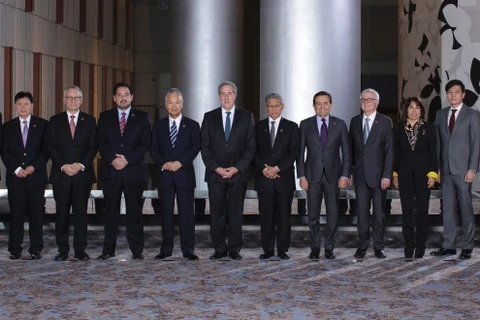Vinh Phuc (VNA) – A panorama on the new-generation Trans-Pacific Partnership (TPP) Agreement was spotlighted at a conference that opened in the northern province of Vinh Phuc on March 4.
The two-day event, jointly held by the National Assembly’s Committee for External Relations and the US Agency for International Development, takes place after the deal was officially sealed by trade ministers of the 12 participating countries after years of negotiations.
Addressing the event, NA Vice Chairwoman Tong Thi Phong underscored the opportunities afforded by the deal for Vietnam, including an expanded market, enhanced trade ties with the US and leading partners in the region, and the world, and increased foreign investments.
However, a range of challenges are awaiting the country when joining regional and global supply chains, she said.
Given this, Phong suggested the legislature speed up the research and issuance of legal documents to continue institutionalising the Party’s guidelines and policies in international integration and engagement in international treaties, particularly new-generation free trade agreements (FTAs).
Along with ratifying international treaties, including the TPP, the NA will complete the legal framework and actualise Vietnam’s commitments to the pact while increasing the efficiency of the legislature’s supreme supervision over fulfilling the commitment.
Minister of Industry and Trade Vu Huy Hoang said contents mentioned in the pact such as State-owned enterprises, pubic procurement and foreign investment attraction are in tune with Vietnam’s guidelines in building comprehensive market economic institutions.
According to the official, the TPP is one of the first new-generation FTAs that aim to encourage the development of small-and medium-sized enterprises (SMEs) and provide technical support for developing nations.
In recent years, Vietnam has focused on reforming the economy and the growth model, raising productivity and its competitive edge.
Joining the TPP will be an opportunity for the country to complete its institutions, particularly those for the market economy – one of three strategic breakthroughs set by the Party, said the Minister.
US Ambassador Ted Osius suggested Vietnam equip its labour force with new skills to make the best use of future economic opportunities, improve its infrastructure to facilitate larger-scale trade activities, and raise the competitiveness of SMEs.
The country should strengthen its partnership with the private economic sector in order to build up a business climate and help Vietnamese businesses connect with the global value chain, he said.
The diplomat pledged that the US will provide more assistance for Vietnam in studying and effectuating the agreement.
The conference also looked into the deal’s impact on Vietnam in the spheres of trade union work, employment and agriculture, as well as social aspects, to name but a few.
TPP brings together 12 countries - Australia, Brunei, Canada, Chile, Japan, Malaysia, Mexico, New Zealand, Peru, Singapore, the United States and Vietnam.
Economic ministers from the 12 member nations, signed the TPP agreement in Auckland, New Zealand on February 4.
Member states now have two years to complete domestic work for TPP ratification. The pact will take effect when ratified by parliaments of least six signatory countries, who comprise a minimum of 85 percent of all members’ overall GDP. This means that the two biggest economies – the US and Japan – must be among these six members.-VNA


























